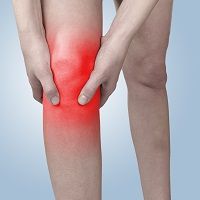Article
Rheumatoid Arthritis Follow-up Study Suggests Long-term Safety and Efficacy of Combo Therapy
Author(s):
Certolizumab pegol (CZP) + methotrexate (MTX) is safe and effective for patients with rheumatoid arthritis (RA) with disease activity despite methotrexate therapy, according to a five-year follow-up study published in Arthritis Research & Therapy. The finding is an extension of the Rheumatoid Arthritis Prevention of Structural Damage (RAPID 2) randomized, controlled trial. It is important because patients with RA are likely to undergo treatment with anti-tumor necrosis factor (anti-TNF) medications over several years.

Certolizumab pegol (CZP) + methotrexate (MTX) is safe and effective for patients with rheumatoid arthritis (RA) with disease activity despite methotrexate therapy, according to a five-year follow-up study published in Arthritis Research & Therapy. The finding is an extension of the Rheumatoid Arthritis Prevention of Structural Damage (RAPID 2) randomized, controlled trial. It is important because patients with RA are likely to undergo treatment with anti-tumor necrosis factor (anti-TNF) medications over several years.
RAPID 2 demonstrated rapid and significant improvements in signs and symptoms of RA after 24 weeks of treatment, using a loading dose of 400 mg at weeks 0, 2, and 4 followed by CZP 200 mg or 400 mg every other week + MTX. While anti-TNF medications and disease modifying anti-rheumatic drugs (DMARDs) have in many ways revolutionized RA treatment, studies looking at long-term side effects continue to be needed.
Patients who completed the RAPID 2 randomized controlled trial or who were American College of Rheumatology (ACR) 20 non-responders at Week 16, entered the open-label extension. In the RCT, 619 patients were randomized to CZP+MTX (n=492) or placebo+MTX (n=127). Overall, 567 patients (91.6%) entered the extension: 447 CZP and 120 placebo patients. In patients with active RA despite MTX therapy, CZP was well tolerated, with no new safety signals identified. CZP provided sustained improvements in clinical outcomes for almost five years.
There were, however, 119 patients who withdrew due to AEs, including infections and nasopharyngitis. There were 19 deaths (3.1 %) during the study, of which 13 were considered related to the study medication. As multiple AEs contributed to patient death, there were 25 fatal AEs in total. There was some concomitant medication usage. “Although direct comparisons with other anti-TNFs are limited by differences in study design and lack of head-to-head studies, the observed incidences of SAEs and fatalities in the RAPID 2 OLE were comparable to long-term studies of other anti-TNFs,” the researchers wrote. Patient retention in the trial extension was good, which generally means an acceptable tolerability profile; the study authors cautioned, however, that patient retention in clinical trials is often better than in practice.
Numerically higher response rates were observed in early responders compared to later responders, confirming the importance of an early response to CZP for some long-term clinical outcomes. This adds to the evidence from RAPID 1 and other clinical research that faster attainment of clinical response to CZP was associated with improved long-term outcomes. Most clinicians suspect that the same is true for other anti-TNFs and DMARDs.
Study limitations include the relatively small number of patients who were evaluated and the drop-off in patient number towards the end of the study due to site closures in countries where CZP became commercially available.




